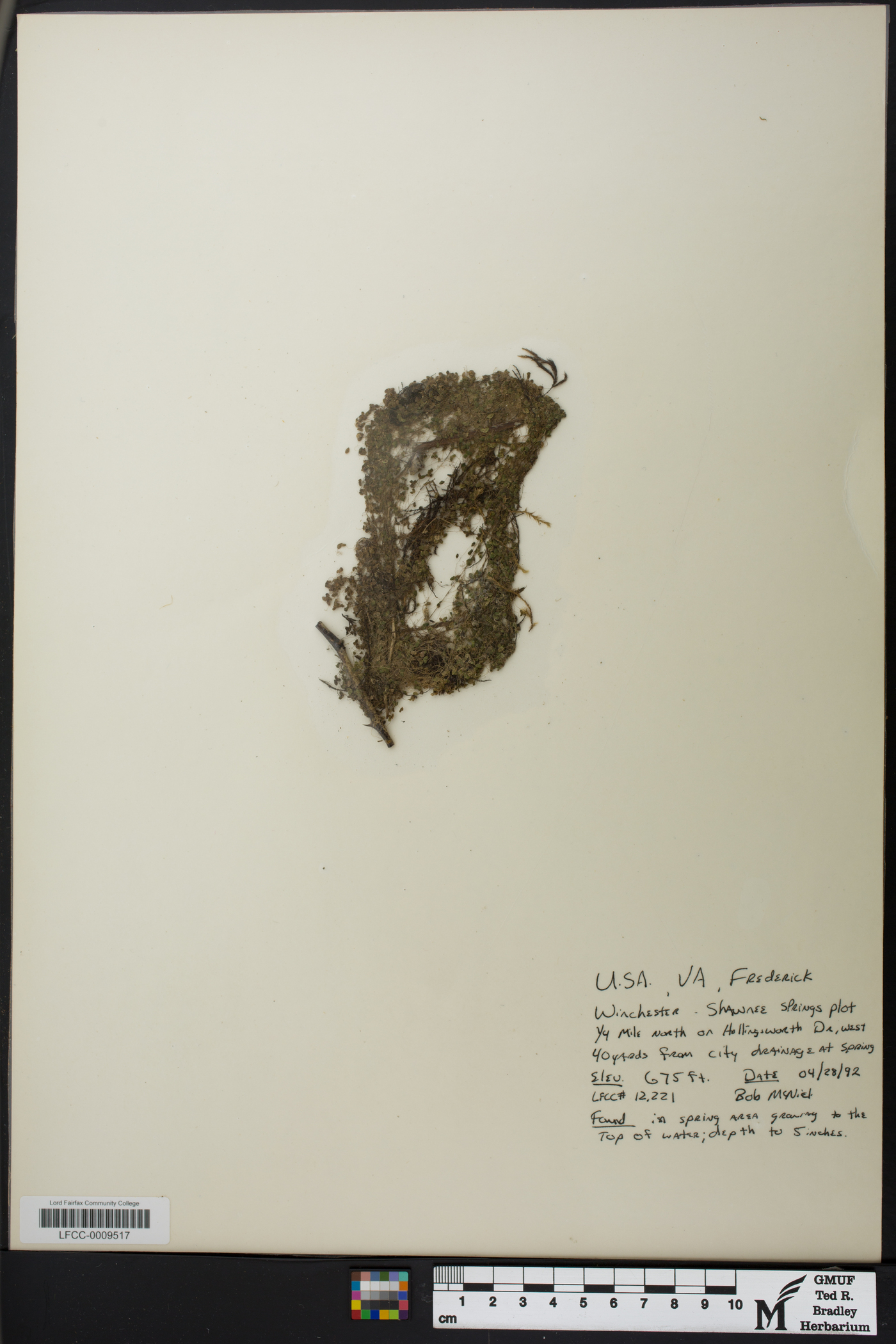
|
Lemnaceae |
|
|
Herbs, mostly perennial (L.emna aequinoctialis and L. perpusilla also annual), aquatic, floating or submersed, reduced to small green bodies called fronds corresponding partly to leaf and partly to stem. Roots 0 or 1--21; root hairs absent. Stems: distinct stems absent. Cataphylls absent. Fronds 1 or 2--20 or more, not differentiated into petiole and blade (thin white stipe or green stalk attaching new fronds to mother frond), coherent at base, flattened or globular, fronds smaller than 1.5 cm, venation from node, outer veins sometimes branching distally from inner ones, or veins absent; new fronds (daughter fronds) arising successively in 1--2 pouches or in cavity at base of mother frond; turions present in some species. Inflorescences usually solitary (mostly 2 per frond for L. perpusilla). Flowers mostly bisexual, 1(--2) per frond (rare in many species); sepals absent; petals absent; stamens 1--2; ovaries 1, bottle-shaped, 1-locular, tapering into short style; stigma funnel-shaped. Fruits follicles; pericarp membranous, opening by bursting. Seeds 1--5, nearly as long as fruit. In this treatment the terms upper / lower and above / below are always used in relation to the position of the frond in the water. The positions toward the base and the apex of the frond are called proximal and distal, respectively. The 'leaf' in the Lemnaceae does not correspond to the leaf of higher plants. It is supposed to consist of a stem in the proximal part (from base to node) and a leaf in the distal part (from node to apex). In Lemnaceae literature it is called a frond. Some authors hold that the flower of the Lemnaceae corresponds to an inflorescence consisting of 1 to 2 male flowers (anthers) and 1 female flower (ovary). With respect to chromosome number, hundreds of Lemnaceae clones were counted, and three levels of cytological variations were identified: (1) intra-individual variation (aneusomaty and / or mixoploidy, (2) intra-populational variation (aneuploidy or polyploidy), and (3) 'racial' differentiation (K. Urbanska-Worytkiewicz 1980). Therefore, many chromosome numbers within a species were counted even if only North American plants are listed. Because of the rarity of flowering and fruiting, only vegetative characteristics are available in most cases. Lemna gibba, L. aequinoctialis, and L. perpusilla are the only American species fruiting rather frequently. The smallness of the plants requires good binoculars magnification and some technical preparations for identification. To analyze anatomic structures (e.g., number of .veins or extension of air spaces), transparent slides are necessary. Fronds preserved in 70% ethanol become transparent. Dried fronds must be boiled first in 70% ethanol and treated afterwards with 10% NaOCl to clear them. Preserving them in ethanol, however, removes pigments that are sometimes important for determination. Under optimal growth conditions the typical anthocyanin pattern of some species does not develop. Therefore, one should observe the species in another season or cultivate it under different conditions. Another difficulty of determination occurs because several (up to 10) Lemnaceae species very often grow together in nature. Therefore, many collection samples contain more than one species, some of which may not be recognized as different at first glance. Lemnaceae are easily distributed by birds over short distances. In many places, they live only so long as conditions are favorable. Afterwards they disappear. A species of a southern area might suddenly occur farther north and remain there for one or .several years. If .the species is exposed to water fed by a warm spring, it might persist far beyond expectations. The distribution maps of the Lemnaceae show the area where the species once was collected and do not represent the actual distribution area, which might be considerably smaller and change within a few years. Generally, most Lemnaceae species have expanded during the last years because of the warming of the climate and eutrophication of the waters. Lemnaceae have a high productivity (some species can double in number within 24 hours) and a very high percentage of amino acids (up to 45% of dry weight). They are used in many regions as food for poultry, pigs, and cows. Wolffia fronds are eaten as a vegetable in southeastern Asia; Lemna gibba is cultivated in Israel for use as a vegetable and salad. Lemnaceae are also used for waste-water purification and as test and indicator plants.
PLANT: Small aquatic plants floating free on or in the water, reduced to small leaf‑like or spherical fronds, rootless or with 1‑21 roots (without root hairs). FRONDS: single or two to many cohering together at base, 0.05‑1.5 cm long (without stalk) and 0.03‑1 cm wide, thin or thick; turions present in some species (turion: a compact frond reduced in size and structure, filled with starch grains, formed under unfavorable conditions, lies dormant in the ground). FLOWERS: (in many species rare) 1‑2 per frond, mostly perfect; sepals and petals none; stamens 1 or 2; ovary 1, bottle‑shaped, tapering into the short style, the stigma funnel‑shaped. FRUITS: with dry pericarp, 1‑5 seeded. NOTES: 4 genera, 34 spp.; worldwide distribution, except arctic and antarctic zones. Landolt, E. l986. Veröff. Geobot. Inst. ETH, Stiftung Rübel, Zürich 71: 1-566. Proper identification of Lemnaceae requires a microscope. Frond shape and papillae are best seen in living material or fronds conserved in 70% alcohol. Colors can only be seen in living or carefully dried specimens. Fall is the best time to detect anthocyanin coloring and turions. In order to see nerves and air spaces well the fronds must be made transparent (e.g., boiled in 70% alcohol and immersed in 14% NaOCl) and stained with Alum Carmine. REFERENCES: Landolt, Elias. 1992. Lemnaceae. Ariz.-Nev. Acad. Sci. 26(1)2. |
|


